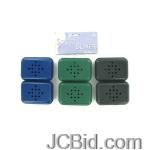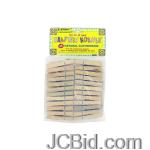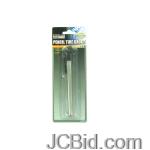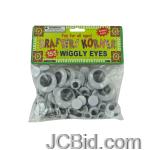
| Updated Blogs |
|
Computer Support Blog
Essensial Software for Web Based Support
HP Server and Desktop
HP ILO - Remote Tech-Support Software
More .....
|
 RSS Feed | Login
RSS Feed | Login Suntan capacitors
Offer all kinds of Capacitors informations.
Tantalum capacitors benefit from multi-anode design
By david at 2008-07-18 10:21:40
One common trend in switch-mode power supplies, microprocessors and digital circuit applications is the reduction of noise while operating at higher frequencies.
In order to make these possible components with low ESR (equivalent series resistance), high capacitance and high reliability are required. One way to significantly reduce the ESR of tantalum capacitors has been a multi-anode approach where more anode elements are used within one capacitor body.
Manganese dioxide (MnO2) technology provides excellent field performance, environmental stability and high electrical and thermal stress resistance over a wide voltage range from 2.5 to 50V. These capacitors are designed for operation in temperatures up to 125°C.
Anode design
The overall surface area of a tantalum capacitor anode, particularly its surface-to-volume ratio, is one of the key parameters that define its ESR value - the higher the overall surface area, the lower the ESR.The single anode is the standard used for general capacitor designs because of cost versus performance efficiency. A multi-anode design offers the lowest possible ESR but the downside of this approach is a higher manufacturing cost compared to a single anode.
The fluted anode design, using standard chip assembly processes, is a compromise between low ESR and cost requirements. While the flute design is used in price sensitive low ESR designs, the multi-anode concept has been used in applications where low ESR and high reliability is required without compromises, such as telecom infrastructure, networking, servers or military/aerospace designs.
Advantages of multi-anode
Apart from the already mentioned differences between single anode, multi-anode and flute anode, there are two additional advantages of the multi-anode concept.Firstly, due to a better thermal dissipation of multiple anodes compared to single anodes, the multi-anode capacitor can be loaded to higher continuous current and it is also more robust against current surges where heat is dissipated more efficiently.
When compared to the single anodes of the same case size the power dissipation of conventional multi-anodes is higher.
Second, when compared to the single anode the volumetric efficiency (the active zone) of multi-anodes is lower and that can lead to a presumption that multi-anodes can not reach the same capacitance times voltage (CV) factor.In practice, thinner anodes are easier to process and are better penetrated by the second MnO2 electrode system, hence enabling the use of higher CV tantalum powders and, therefore, in the case of multi-anode capacitors the same or even better CV of the capacitor is achieved.
New multi-anode construction
Conventional tantalum multi-anodes on the market mostly use three to five anodes inside one body in a vertical configuration.While this is practical from the manufacturing point of view, from the ESR standpoint it is inferior to a horizontal layout where thinner, flat anodes can reduce the ESR even further
The cost of the multi-anode design grows exponentially with the number of anodes. The three anodes currently used in most designs are close to the optimum cost versus ESR ratio.
The individual anodes in the vertical design configuration are connected to the second electrode by a silver glue epoxy to a second electrode lead frame. The same system is used in standard single anode capacitors hence the manufacturing technology is similar to the established process and no major investment in new technology flow is required for the multi-anode design.
The horizontal design on the other hand would require a ‘solution’ to connection between the anodes and costly modifications of established technology. Hence to date this design has not been used in volume production of the single body multi-anode capacitor. Horizontal designs are used more often in special applications by ‘stacking’ two or more finished capacitors together by soldering, or jigging systems into arrays or modules.
Compared to horizontal, the vertical construction has the disadvantage of limited height reduction potential, currently at 3.5 to 4.5mm. This factor is increasing in importance as miniaturisation of electronics, even in applications like telecom infrastructure or military, is becoming an issue.
Mirror multi-anode construction
A novel multi-anode construction has been developed using two anodes in horizontal ‘mirror’ configuration.The mirror construction uses a modified lead frame shape where the lead frame is in the middle between the two anodes. This configuration solves the connection issues of the horizontal anodes and brings the manufacturing modification cost to acceptable level.
The ESR level of the two anode mirror design is slightly inferior to the three vertical anode equivalent, however the cost versus performance value is better - the 2-anode system is cheaper to make than 3-anodes.
However, the main benefit achieved is this configuration enables the reduction of component height of multi-anode designs down to 3.1mm 7343-31 D case size and even 2.0mm maximum height 7343-20 Y case size in the near future. The other advantage of the mirror design is its symmetrical layout which helps to reduce self inductance ESL.
Comparisons
When comparing the different configurations it can be seen that, as previously described, the higher the surface area, the better ESR is achieved.The ESR distribution range is also much tighter in low ESR designs, hence the low ESR parts are recommended for circuits with a bank of parallel capacitors due to a more equal load share among the individual capacitors.
It should also be noted there is no direct comparison in the case of vertical multi-anode as it is only available in the taller E case size compared to the other designs made in the lower D case size. Three vertical D case size anodes in the vertical multi-anode style would show a higher ESR value compared to the E case size data which is available for this comparison only.
The other benefit of mirror design is its symmetrical internal design. The symmetrical construction helps to compensate part of the inductance loop and thus self inductance ESL is lower compare to a classical lead frame with a pocket.
Catalogue ESL values of D case single anode design are 2.4nH, while typical values are around 2.1nH. The mirror design ESL is about 1nH - half that of the conventional self inductance. This moves the resonance frequency of mirror multi-anodes to higher values. Capacitance drop with frequency is lower in the case of the mirror due to thinner anodes used.
The move of the resonance frequency in the mirror design due to the lower ESL significantly improves its working range compared to the current DC-DC converter switching frequency range of 250kHz–500kHz.
The other benefit of the mirror design is in the improved power dissipation capability. The heat generated in the anode by ripple current is cooled through leads and tantalum wire by PCB pads.
Thus the single anode D case capacitor is capable of continuously dissipating 150mW power compared to 255mW in the case of the mirror D case. This represents the ripple current capability of a single design 1.0A (D 330µF 10V 150mohm) with significantly higher 2.7A ripple in the case of a mirror design (D 330µF 10V 35mohm).
The mirror type of horizontal multi-anodes can reach capacitance values in TPM D case from 10µF to 1000µF in voltages ranging from 2.5 to 50V with an ESR range of 25–140mohm. High voltage 35 and 50V capacitors will be especially attractive for telecom applications where the design height is becoming an important parameter.
The capacitance values 10-22µF, ESR 65-140mohm, on a single 35-50V capacitor are difficult to attain within the 3.1mm maximum height by any other technology.
In conclusion the mirror design approach of horizontal multi-anode tantalum capacitors can offer: better low ESR configuration; lower profile; lower manufacturing cost; lower ESL; and significantly higher ripple current capability.
Tomas Zednicek is technical marketing manager at AVX
Permalink | Comments (0)
Comments
To add a comment please login by clicking here




